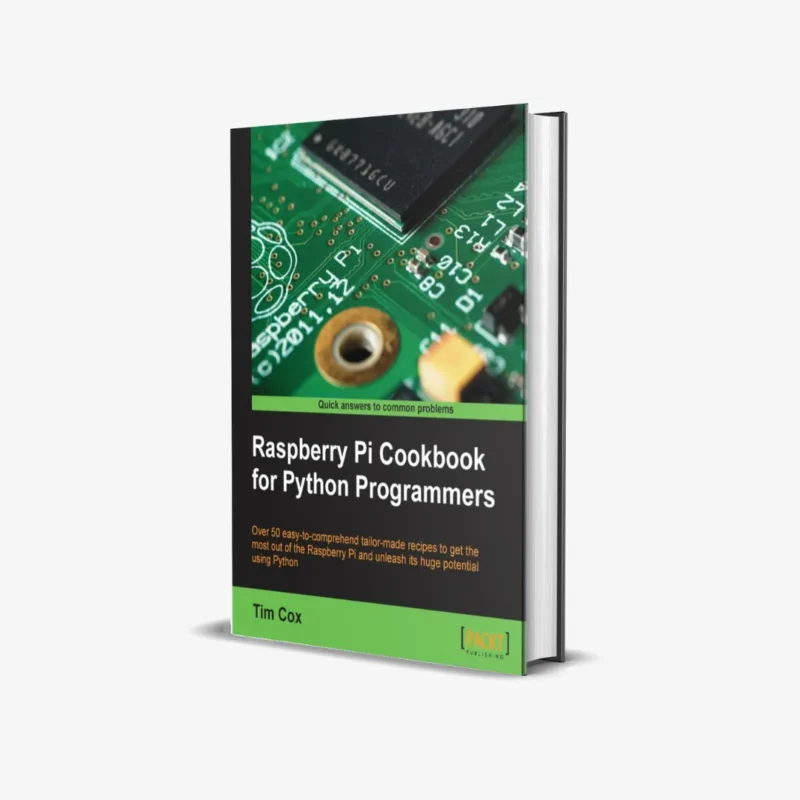The Raspberry Pi Foundation has been selling its computers since 2012 to inspire programmers and engineers.
Raspberry Pi Cookbook for Python Programmers is a practical guide for getting the most out of this little computer. It guides you through Raspberry Pi's many uses and lets you showcase its best. Discover what the Raspberry Pi offers using detailed Python 3 examples that you can adapt and extend; see where your creativity takes you!
“Raspberry Pi Cookbook for Python Programmers” begins by guiding you through setting up the Raspberry Pi, performing tasks using Python 3, and introducing the first steps to interface with electronics. As you work through each chapter, you will build up your skills and knowledge and apply them as you progress throughout the book, delving further and further into the unique abilities and features of the Raspberry Pi.
Later, you will learn how to automate tasks by accessing files, building applications using the popular Tkinter library, and creating games by controlling graphics on a screen. You will harness the power of the built-in graphics processor by using Pi3D to generate your own high-quality 3D graphics and environments. Connect directly to the Raspberry Pi’s hardware pins to control electronics, from switching on LEDs and responding to push buttons right through to driving motors and servos. Learn how to monitor sensors to gather real-life data, use it to control other devices, and view the results over the Internet. Apply what you have learned by creating your own Pi-Rover or Pi-Hexapod robots. Finally, we will explore using many of the purpose-built add-ons available for the Raspberry Pi and interfacing with common household devices in new ways.
The “Raspberry Pi Cookbook for Python Programmers” will allow you to discover the vast range of abilities this microcomputer has. By following clear examples, you can pick up many new skills and arm yourself with the tools to create your own exciting and intriguing projects.
Approach
“Raspberry Pi Cookbook for Python Programmers” is written in a cookbook format, presenting examples in the style of recipes. This allows you to go directly to your topic of interest or follow topics throughout a chapter to gain thorough, in-depth knowledge.
Who this book is for
This book aims to bring you a broad range of Python 3 examples and practical ideas that you can develop to suit your own requirements. By modifying and combining the examples to create your own projects, you learn far more effectively with a much greater understanding. Each chapter is designed to become a foundation for further experimentation and discovery of the topic, providing you with the tools and information to jump right in.
Readers are expected to be familiar with programming concepts and Python (where possible, Python 3 is used), although beginners should manage with the help of a good Python reference book and background reading. No prior knowledge of the Raspberry Pi or electronics is required; however, for the hardware sections, you will need some basic electronic components/household tools to build some of the projects.









Reviews
There are no reviews yet.